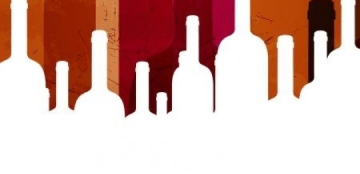
Many of you may have heard or read of the increasing attention towards grower Champagne. But to the layman, what does grower Champagne really mean? What kind of Champagne is it and what is all the fuss about it?
The first thing to explain is that the grower Champagnes are craft wines produced by a winegrower who vinifies exclusively grapes produced in his own vineyards and markets them under his own brand.But to get the full picture, let's take a step back. Historically, making a bottle of champagne was a complex and mysterious affair. Only the trade was the custodian of this rare know-how. Naturally, the winemakers would bring their grapes to the merchants who took care of everything else: making champagne and going to the markets to sell this unique drink.
Now, however, the scenario has changed: new ‘vignerons’ (French term for winemaker), children or grandchildren of the same small winemakers, are beginning to create their own Champagne by enhancing their territories, even individual plots, and recovering the tradition of techniques with a modern look. This is the new wave of grower Champagne.
These winemakers are the heralds of a gustatory revolution that is shaking a Champagne sometimes homologated by commercial blends. This status of grape harvester guarantees consumers complete control over the entire production process from the vineyard to the bottle.
What Makes Grower Champagne Different?

Grower Champagnes have recently gained worldwide fame, and this is not just a passing trend. Over the past 10 years, grower Champagne has gone from almost unknown to extremely popular. And not just in Europe: these wines are also highly sought after in the United States and the rest of the world, and their low availability makes them even more valuable. They sell out international tastings and continually receive rave reviews from wine professionals and critics, who praise them for their individuality and value. And consequently consumers too, especially those who appreciate artisanal products and understand the value of a specific terroir, have begun to discover these unique wines which fully express their personality, their courage, and their bond with the territory.
But what makes them so special?
Surely, one of the most interesting features is their uniqueness. In fact, while the Champagnes of the big brands are produced from grapes purchased from different producers and vineyards in the region, and blended to guarantee year after year a standard product that reflects the company style, the grower Champagnes are just the opposite. In this case, producers own their vineyards: they cultivate the vines and harvest the grapes with which they produce their wines, often from individual parcels. Usually they vinify each small cru and each harvest separately so as not to lose the soul of their wines. Furthermore, many of these producers have recovered ancient customs, such as the use of small barrels for aging, so that their wines, although modern, are a strong expression of tradition.They have limited productions, often numbered, because they favor quality over quantity.
The resulting wines are not necessarily of superior quality to those of the major brands but are artisanal wines, characterized by a distinct personality that reflects the place of origin and the hands that produced them. And this makes them interesting but above all unique and unrepeatable. Identifying grower Champagnes is not difficult. Finding a family name on the label can be a clue, as many small family-run businesses normally produce grower Champagne, but there is a specific way to identify this type of wine. In fact, each bottle of Champagne has an acronym, which represents its production process. The acronym RM, which stands for 'récoltant-manipulant' (literally translating as harvester-handler) is the one for grower Champagne.
Top Grower Champagnes

Here at 8wines we are very proud of our grower Champagne selection which includes some very prestigious wines and some little gems.
- Agrapart, for example, is a small family estate, founded during the Belle Epoque in the heart of the Grands Crus of the Côte des Blancs, which for many years has distinguished itself for the exceptional quality of its terroir cuvées and for the extraordinary minerality of wines. The Estate, founded by Arthur Agrapart, underwent an important qualitative change in the 1950s under the impulse of Pierre Agrapart, grandson of the founder, who created the Agrapart style: terroir champagne, elegant and characteristic, a precise expression of the encounter of chardonnay, the grape that is king here, with the great chalky terroirs of the Côte des Blancs. Today, under the leadership of Pascal Agrapart, now supported by his son Ambroise, the company, very attached to its RM status, cultivates 12 hectares of vineyards, of which 9 hectares on the grands cru of Avize, Cramant, Oger or Ory. Here the methods of cultivation and winemaking remain artisanal and based on the utmost respect for the natural environment. Although the company does not claim any certification, it has adopted all the principles of organic viticulture since the late 1980s. All their cuvées are vinified by plot and aged in oak barrels. The average age of the House's vines is 40 years old, but some are over 60 years old. The house produces an average of 90,000 bottles each year, mainly Blanc de Blancs Grands Crus.
- Champagne Jacquesson, on the other hand, has more than 200 years of history. It was founded in 1798 by Memmie Jacquesson and then prospered rapidly. Its unique and rigorous know-how has made this brand a jewel of the region! It even attracted the attention of Napoleon I, who awarded it a gold medal in 1810 "for the beauty and richness of its cellars". It was acquired in 1974 by the Chiquet brothers who are at the origin of the rebirth of this brand. Today this Champagne house focuses its efforts on an extremely qualitative production contained in 350,000 bottles which allows the use of non-industrial production methods. The vineyards extend over an area of 30 hectares located in Avize, Dizy, Ay and Hautvillers. The Jacquesson house has risen to third place in the ranking of the best champagnes selected by the Revue du Vin de France. The brand is becoming more and more popular, but this does not lead to overproduction. Indeed, the house production remains centered on cuvées from single plots.
- The Maillarts have handed down their winegrowing knowledge in the northern part of the Montagne de Reims from father to son, since the 16th century. Perpetrating nearly 300 years of history, Nicolas Maillart preserves the philosophy of this family of winemakers. But when he took over the company in 2003, he revolutionized the family business and stopped selling his grapes to the cooperative. He oriented the range towards mature, fruity, and complex champagnes, in particular thanks to the arrival of oak barrels on the estate. This small producer currently manages a vineyard of around 9 hectares where he produces wines that express the potential of the Premier and Grands Crus terroirs. The vineyard, located mainly in Ecueil in the Montagne de Reims, is dominated by Pinot Noir. This allows Nicolas Maillart to produce intense, expressive cuvées with that characteristic touch of vinosity. Two cuvées stand out in particular, the Chaillots Gillis, a Chardonnay extra brut from Ecueil vinified in barrique, and the Francs de Pied, a Pinot noir on the sands planted in 1973 and not grafted, a real rarity. Two cuvées that sign the style of the house.
- The Soutiran Champagne House, a 6ha family house, is located in the heart of the Montagne de Reims, in the village of Ambonnay, which benefits from the prestigious Grand Cru distinction. Pinot Noir and Chardonnay grapes are planted on hillsides with chalky soils that are particularly rich in magnesium. This typicality, specific to the terroir of the village, offers a minerality to the wines which are expressed by saline and iodized notes. Also, these champagnes rest between 5 and 8 years, much more than what the appellation imposes in order to reveal the structure of these wines.




















Extremely fast and professional service including packaging.